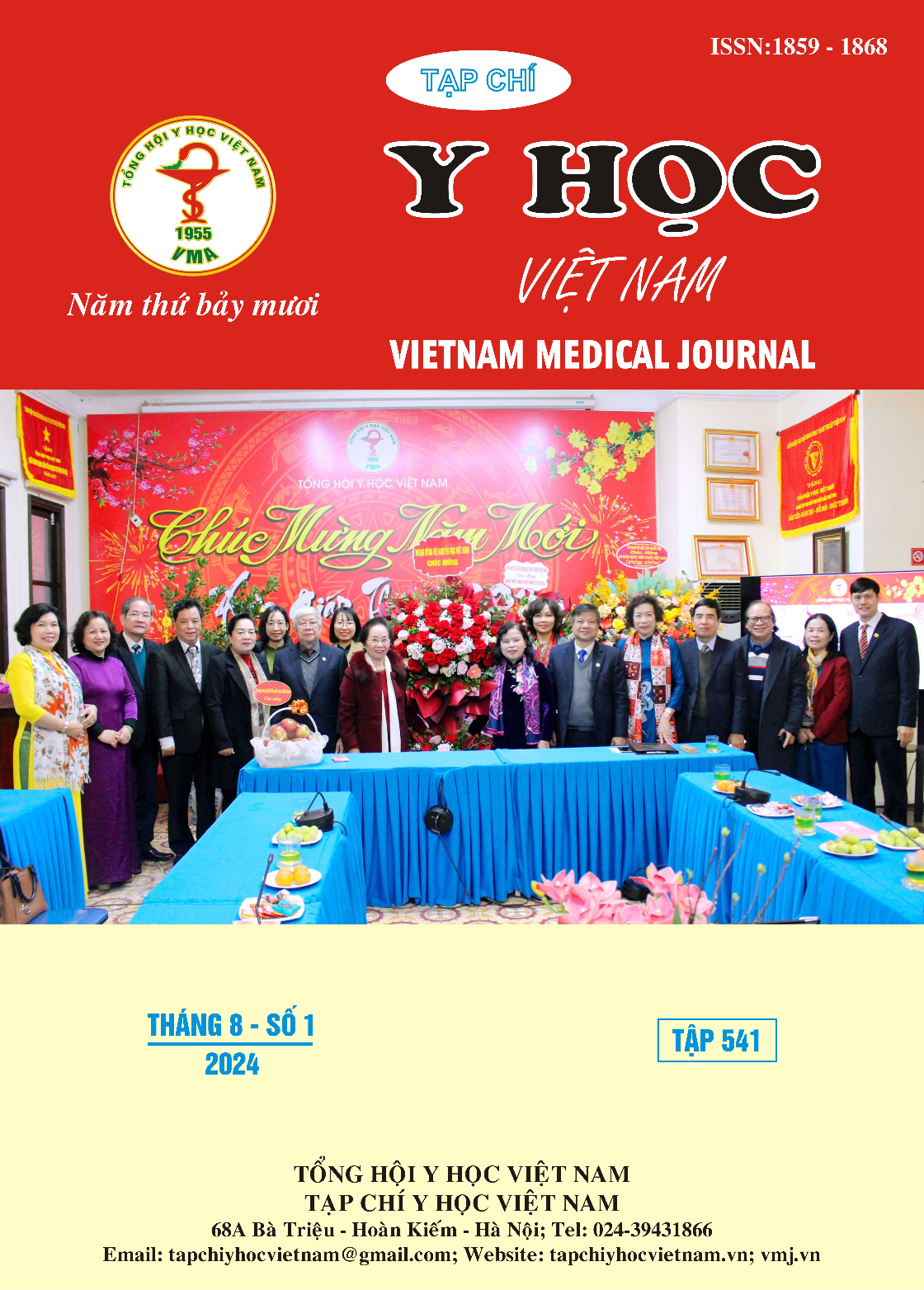NGHIÊN CỨU ĐẶC ĐIỂM TẬT KHÚC XẠ CỦA BỆNH NHÂN VIÊM KẾT MẠC DỊ ỨNG
Nội dung chính của bài viết
Tóm tắt
Viêm kết mạc dị ứng là tình trạng viêm cấp tính hoặc mãn tính của kết mạc, thường gặp do các dị nguyên ngoài môi trường gây ra. Mục tiêu: Phân tích đặc điểm tật khúc xạ trên bệnh nhân viêm kết mạc dị ứng. Đối tượng và phương pháp nghiên cứu: Nghiên cứu được thực hiện trên 51 bệnh nhân được chẩn đoán và điều trị viêm kết mạc dị ứng tại Bệnh viện Đại học Y Hà Nội giai đoạn từ tháng 8/2023 đến 4/2024. Kết quả: Độ tuổi trung bình là 31.62 ± 16.57 tuổi. Thị lực chỉnh kính tối đa của mắt viêm kết mạc dị ứng chủ yếu lớn hơn 20/30. loạn thị là loại tật khúc xạ thường gặp nhất trên bệnh nhân mắc viêm kết mạc dị ứng, loạn thị thấp chiếm tỷ lệ cao nhất với 53,9%, tiếp đó là viễn thị thấp với 52,9%. Kết luận: Viêm kết mạc dị ứng có thể gặp ở tất cả các độ tuổi. Không có sự chênh lệch nhiều về giới tính, khu vực sinh sống cũng như nghề nghiệp có tiếp xúc nhiều với dị nguyên hay không. Loạn thị là tật khúc xạ thường gặp nhất trên bệnh nhân viêm kết mạc dị ứng.
Chi tiết bài viết
Từ khóa
Viêm kết mạc dị ứng, tật khúc xạ
Tài liệu tham khảo
2. Wong AHC, Barg SSN, Leung AKC. Seasonal and perennial allergic conjunctivitis. Recent Pat Inflamm Allergy Drug Discov. 2009;3(2):118-127. doi:10.2174/187221309788489733
3. Leonardi A, Piliego F, Castegnaro A, et al. Allergic conjunctivitis: a cross-sectional study. Clin Exp Allergy J Br Soc Allergy Clin Immunol. 2015;45(6):1118-1125. doi:10.1111/cea.12536
4. Chaudhary NP, Badhu BP, Dev B, Deo P. Pattern of Refractive Status in Patients with Vernal Keratoconjunctivitis at Birat Medical College Teaching Hospital. J Nepalgunj Med Coll. 2022; 20(2): 46-48. doi: 10.3126/jngmc.v20i2. 51908
5. Malu KN. Allergic conjunctivitis in Jos-Nigeria. Niger Med J J Niger Med Assoc. 2014;55(2):166-170. doi:10.4103/0300-1652.129664


